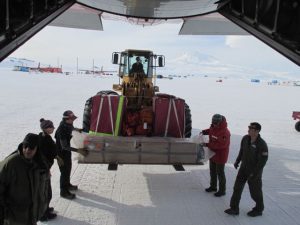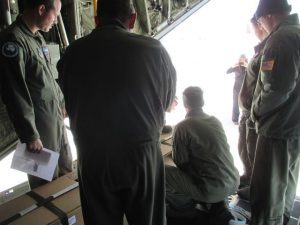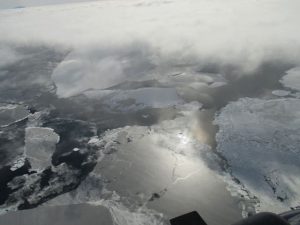In addition to mapping the properties of the Ross Ice Shelf with the IcePod, we measuring the ocean properties just north of the ice shelf. We will do this with ALAMO floats (Air Launched Autonomous MicroOberserver). ALAMO floats measure three critical properties of the ocean: temperature, salinity, and pressure. They do this while slowly sinking to the bottom of the ocean and then rising back to the surface. When they are at the surface, they place a phone call via Iridium satellites and literally email their data back to us.
ALAMO floats are a fairly new technology which has been used mostly in warm subtropical waters to date. A major complication in polar waters is the possible presence of sea ice. The ALAMO floats have a sea-ice-avoidance algorithm that detects whether there is likely to be sea ice as they rise upward, and to not surface if sea ice is likely to be present. The sensors and communications electronics are on top of the float, and we don’t want it to get damaged by running into sea ice from below.
The floats are deployed from the air, which makes it possible to go places that ships can’t go. A perfect example of such a location is the waters just north of the Ross Ice Shelf. In this region, the sea ice melts out near the ice shelf in late November while there is still lots of ice to the north, keeping ships away. An icebreaker, the Nathaniel B. Palmer, is the first ship scheduled to visit this region in late January. By deploying the ALAMO floats by airplane, we can make ocean measurements 6-8 weeks sooner than we could make them from a ship. These springtime measurements will contribute to our understand of the seasonal cycle of the sea ice in this region.
Our first challenge is that we need to be able to see where we are deploying the floats. In particular, we need a day without low clouds, which are quite common in this area. Our second challenge is that we need to be sure that we are dropping the floats into water and not onto sea ice. Satellite images help us in our planning, but in the end we just have to fly out there and look firsthand.



End
